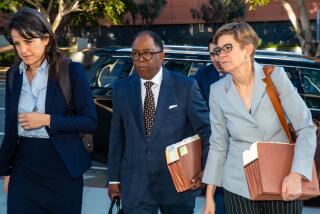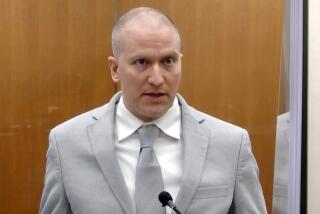Andersen Asks U.S. Judge to Throw Out Verdict
Accounting firm Arthur Andersen asked a federal judge Tuesday to set aside its June 15 conviction on obstruction of justice or grant a new trial, saying jurors reached their decision through flawed reasoning and improper instructions.
In a motion filed in U.S. District Court in Houston, Andersen said the verdict is “insupportable” because jurors based their decision to convict on conduct that wasn’t a crime and hadn’t been cited in its indictment.
The Justice Department has not seen the filing and had no immediate comment about it, spokesman Bryan Sierra said. But he added: “We believe the jury’s verdict was sound.”
Prosecutors had argued that Andersen violated the law by ordering the destruction of paper and electronic files related to its audit of Enron Corp. with the intent of impeding a Securities and Exchange Commission inquiry. But several jurors said after the verdict that they found much of the evidence of shredding to be superficial.
Instead, jurors said they focused on an Oct. 16 e-mail in which Andersen staff lawyer Nancy Temple suggested deleting certain potentially damaging lines from a memo being drafted by David B. Duncan, Andersen’s Houston-based partner who led the Enron audit team. The jury found Temple had criminal intent when she asked Duncan to alter the document.
Andersen said the jury’s explanation “leaves no doubt that the verdict was illegitimate.” The firm claimed Temple didn’t urge Duncan to alter a document within the meaning of the language in the obstruction statute.
Changing an original document by whiting out the date and substituting a false one, Andersen said, could constitute illegal alteration. But “suggesting edits to a draft memorandum” does not, the firm argued.
“It would defy common sense to conclude that commenting on a draft document ... constitutes obstruction of justice,” the firm said in its motion. “Indeed, if collaboration ... may so easily be a crime, virtually every law firm in the United States engages in criminal conduct every day.”
Andersen also contended the jury’s belief that Temple’s e-mail amounted to corrupt conduct should be grounds for reversal because it was not cited in the indictment.
Prosecutors had cited Temple’s e-mail as evidence that Andersen feared an SEC probe and therefore had an improper motive to shred documents. But the prosecution did not argue that Temple’s e-mail itself was an act of obstruction.
“Andersen thus had no notice that Ms. Temple’s e-mail of proposed edits could be regarded as a criminal act,” the motion said, adding that the firm would have defended itself on that front if it had known it would be grounds for conviction.
Andersen also said U.S. District Judge Melinda Harmon provided the jury with erroneous instructions on the legal definition of “corrupt.” Andersen had argued for an instruction that would tell the jury they had to agree that the firm used an improper method, such as bribery, in order to persuade employees to dispose of documents. Harmon instead gave the jury a less restrictive instruction.
More to Read
Inside the business of entertainment
The Wide Shot brings you news, analysis and insights on everything from streaming wars to production — and what it all means for the future.
You may occasionally receive promotional content from the Los Angeles Times.










